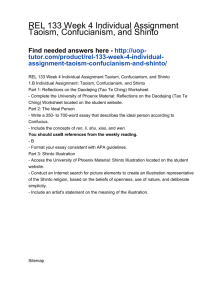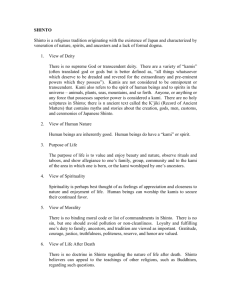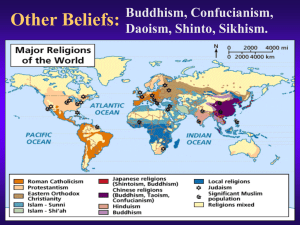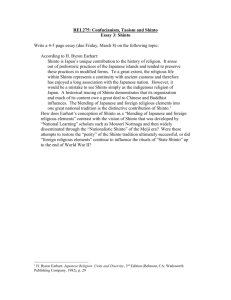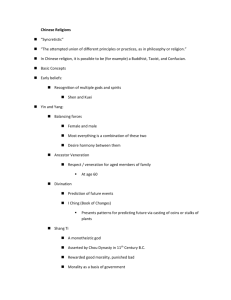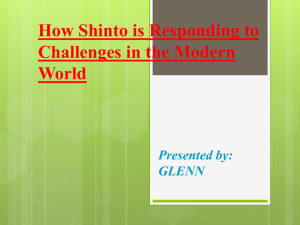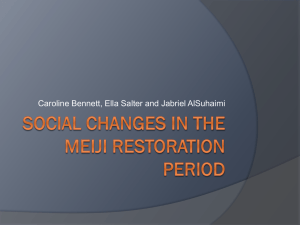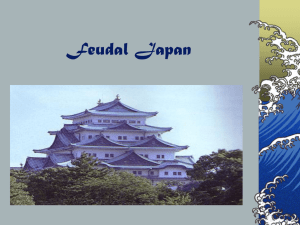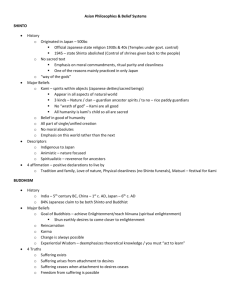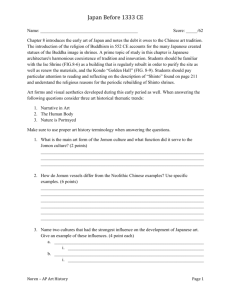Animism/Shinto Info
advertisement
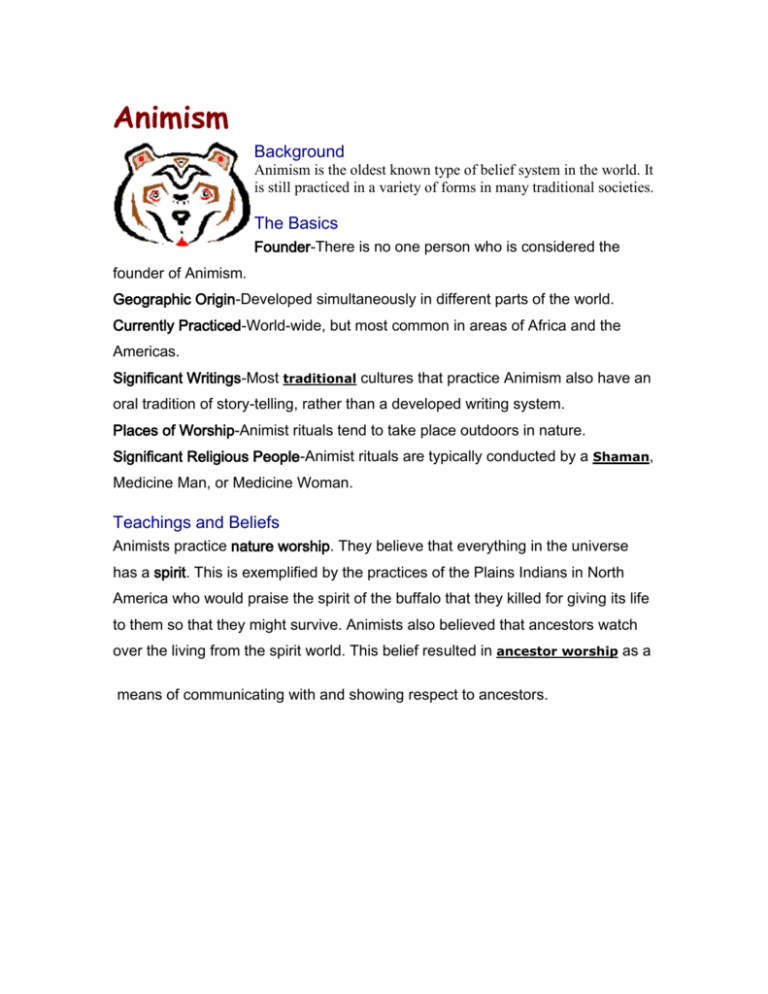
Animism Background Animism is the oldest known type of belief system in the world. It is still practiced in a variety of forms in many traditional societies. The Basics Founder-There is no one person who is considered the founder of Animism. Geographic Origin-Developed simultaneously in different parts of the world. Currently Practiced-World-wide, but most common in areas of Africa and the Americas. Significant Writings-Most traditional cultures that practice Animism also have an oral tradition of story-telling, rather than a developed writing system. Places of Worship-Animist rituals tend to take place outdoors in nature. Significant Religious People-Animist rituals are typically conducted by a Shaman, Medicine Man, or Medicine Woman. Teachings and Beliefs Animists practice nature worship. They believe that everything in the universe has a spirit. This is exemplified by the practices of the Plains Indians in North America who would praise the spirit of the buffalo that they killed for giving its life to them so that they might survive. Animists also believed that ancestors watch over the living from the spirit world. This belief resulted in ancestor worship as a means of communicating with and showing respect to ancestors. Shinto Background Shinto, which means "Way of the Gods," is the traditional religion of Japan that focuses on nature. Many consider Shinto to be a form of Animism due to the many similarities found between them. Basics Established: Shinto was was founded around the year 500 BCE. Founder: Evolved from a mixture of tribal religions with similar beliefs. Geographic Origin: Developed on the Japanese archipelago. Currently Practiced: Most common in Japan. Significant Writings: Kokiji, or Record of Ancient Matters and Nikong, or Chronicles of Japan. Places of Worship: Shinto shrines are usually dedicated near sites of impressive natural beauty (e.g., mountains, lakes, etc.), or of historical importance to Japan. The entrance to these shrines is usually indicated by the presence of a red gateway called a torri. Significant Religious People: Traditionally, the Emperor of Japan was considered to be a direct descendant of the Sun Goddess who created the Japanese islands. Therefore, the Emperor was considered divine by the people who practiced Shinto. After Japan surrendered to the United States in WWII, Emperor Hirohito renounce his divinity and political authority. Teachings and Beliefs Shinto teaches that there is a sacredness of the whole universe and that humans can be in tune with this sacredness. Every mountain, river, plant, animal, and all the diverse phenomena of heaven and earth have spirits, or kami, which inhabit them. Reverence is paid to the ancestors through the practice of ancestor worship.
